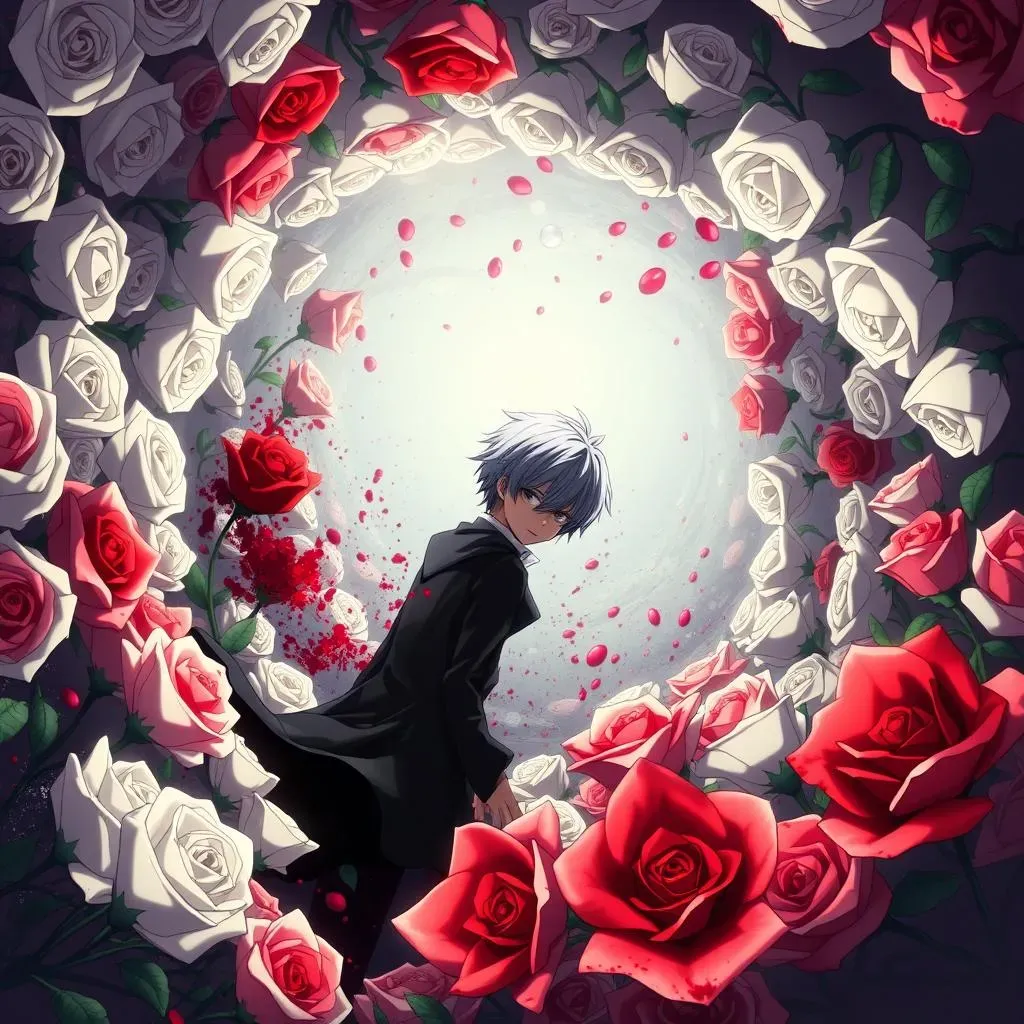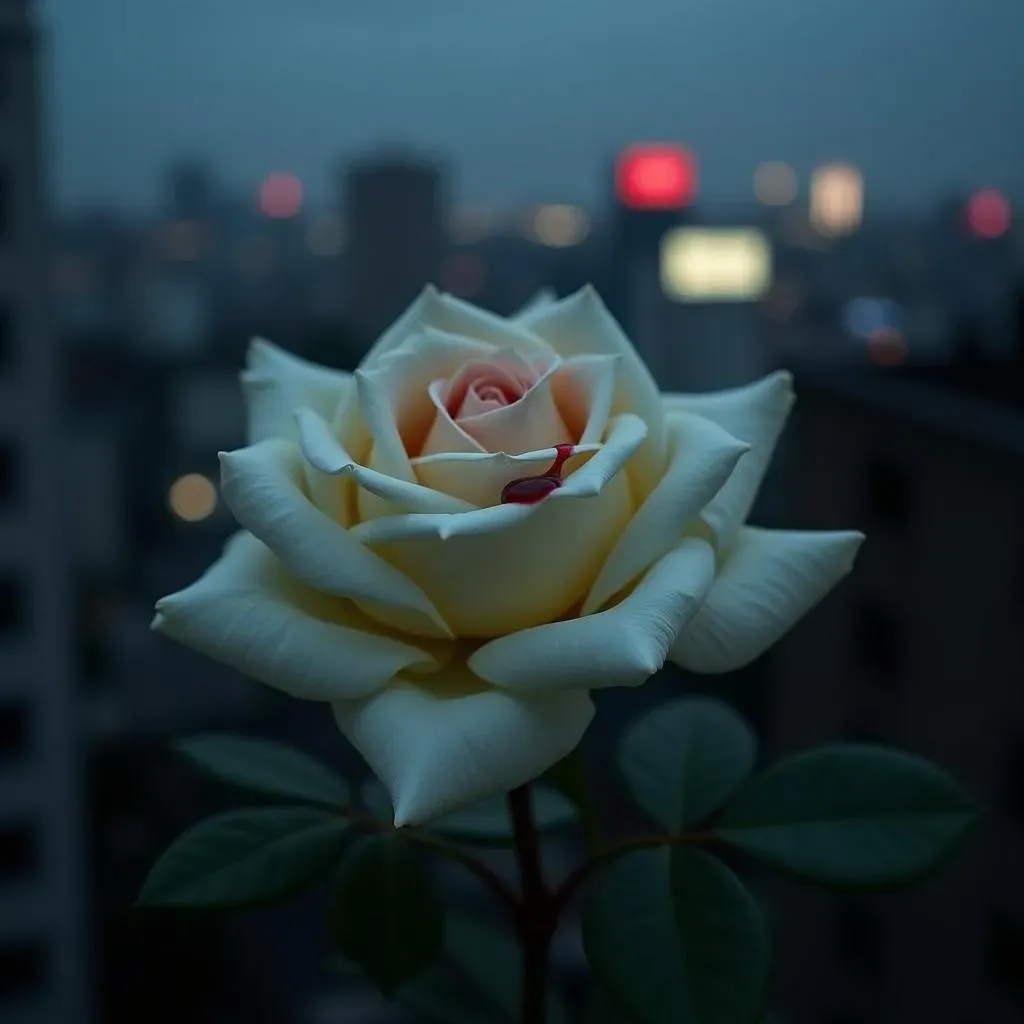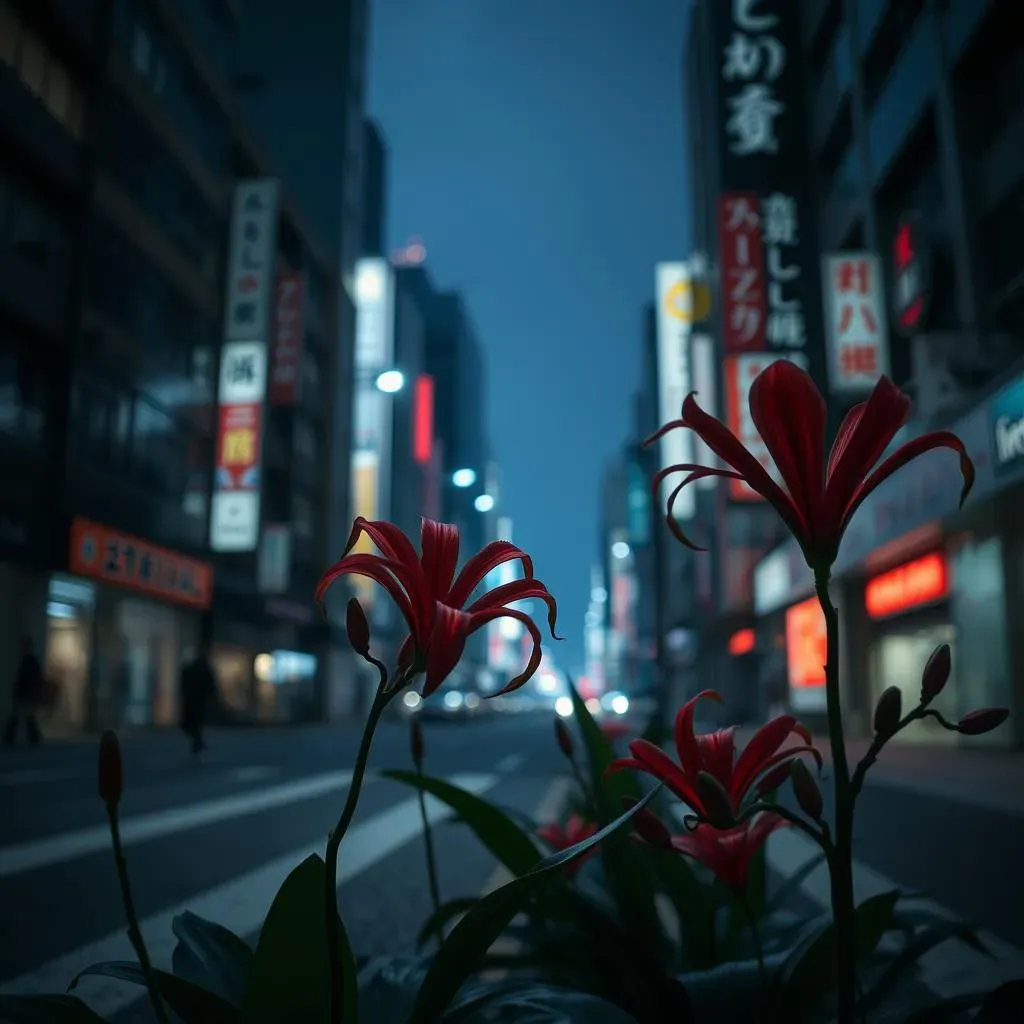Table of Contents
Have you ever noticed the flowers in Tokyo Ghoul? Not just pretty decorations, but symbols packed with meaning. Specifically, the spider lily flower, also known as Higanbana, appears at critical moments, leaving us wondering what it all means. In this article, we're going to explore the symbolism of these flowers, particularly the white roses and the red spider lilies, in relation to Kaneki's journey. We will begin by analyzing the visuals of Tokyo Ghoul Episode 12, where these flowers play a crucial role in Kaneki’s transformation. We'll then look at how the white roses represent his lost innocence. Finally, we will focus on how the red spider lilies, a significant flower in Japanese culture, symbolize death and acceptance, marking a turning point for Kaneki. Get ready to see how these flowers enhance the story of Tokyo Ghoul, adding layers of depth and emotion, especially regarding the spider lily flower tokyo ghoul.
Analyzing the Flowers: Tokyo Ghoul's Episode 12

Analyzing the Flowers: Tokyo Ghoul's Episode 12
The Visual Feast of Episode 12
Okay, so let's talk about episode 12 of Tokyo Ghoul. It's not just another episode; it’s a turning point, and the visuals are a big reason why. The flowers aren't just pretty backgrounds; they're practically characters themselves. The director used them to tell a story, a silent one that speaks volumes about Kaneki's transformation. The way the colors shift and the types of flowers change, it's all intentional, and it’s all there to show us what's happening inside Kaneki's head. It's like a visual metaphor party, and we're all invited.
Symbolism in Motion
It's not just about pretty pictures, though. The flowers are symbolic. We see white roses at first, and they're all about purity and innocence, representing Kaneki's former self. But then things get dark, and these pristine white roses start to get stained with blood. This isn't just a random artistic choice; it’s a visual representation of Kaneki's innocence being lost and the harsh reality of his new ghoul life taking over. It's a pretty brutal way to show someone's world falling apart, and it’s all done through these flowers.
Flower | Initial Symbolism | Symbolism After Change |
|---|---|---|
White Roses | Innocence, Purity | Loss of Innocence, Corruption |
Red Spider Lilies | N/A | Death, Acceptance |
The Shift to Higanbana
Then comes the red spider lily, the Higanbana. This flower is a big deal in Japanese culture; it's associated with death and the afterlife. When these flowers appear, it’s like the show is announcing that Kaneki's old self is gone. The Higanbana is a symbol of farewell to his past and an acceptance of his new reality as a ghoul. It's a really powerful image, showing that he's not just changing; he's fundamentally becoming someone else. The flowers aren't just decoration; they're the roadmap of his transformation.
The Significance of White Roses in Tokyo Ghoul

The Significance of White Roses in Tokyo Ghoul
The Symbol of Purity
So, let's chat about the white roses in Tokyo Ghoul. These aren’t just any old flowers; they're a big symbol. Think of them as Kaneki's "before" picture. They pop up in the beginning, when he's still just a normal, book-loving college kid. These white roses represent his innocence, his purity, everything good and untouched about him before he gets tangled up in the ghoul world. It’s like they're saying, "Hey, this guy's a good egg," before life throws a whole lot of crazy at him.
I remember when I first watched this, I thought, "Oh, pretty flowers." But then, as the story goes on, you realize how important they are. It’s almost like the show is giving you a baseline, a visual reminder of what Kaneki is before everything changes. They’re a stark contrast to the dark and gritty world he’s about to enter, and that contrast is not accidental. It’s there to make you feel the weight of what he’s losing.
The Stain of Reality
Now, here's where it gets interesting, and kind of heartbreaking. The white roses don't stay white for long. As Kaneki goes through his... let's call it "ghoul awakening," these roses start getting splattered with blood. This isn't just a "oops, I spilled some red paint" moment. It is a powerful image. It’s the show telling us that Kaneki’s innocence is being stained, corrupted by his new reality. The blood represents the violence and darkness he is now a part of. It's like the pure white canvas of his life is being marred by the harsh truths of the ghoul world.
It's a really clever visual cue, because we see the roses and think "innocence" and then BAM, blood. It’s a quick way to show how much he's changing and how brutally he's being forced to confront his new identity. The roses become a symbol of his loss, a reminder of the life he can never go back to. It’s a really effective way to show that his innocence is not just fading, but it is actively being destroyed.
Flower | Symbolism Before | Symbolism After |
|---|---|---|
White Roses | Purity, Innocence, Untouched | Loss of Innocence, Corruption, Harsh Reality |
Red Spider Lilies: A Symbol of Death and Transformation in Tokyo Ghoul

Red Spider Lilies: A Symbol of Death and Transformation in Tokyo Ghoul
Higanbana: More Than Just a Pretty Flower
Alright, let's get into the real heavy stuff: the red spider lilies, or Higanbana. These aren't your average garden variety flower; they come with a whole lot of cultural baggage, especially in Japan. They're often associated with death, funerals, and the afterlife. So, when you see them pop up in Tokyo Ghoul, you know things are about to get serious. It’s like the show is dropping a massive hint: "Hey, things are not gonna be the same anymore." It's a visual cue that something is ending, and something new is beginning. It's like a dramatic spotlight shining on Kaneki’s transformation.
I think what's really cool about the Higanbana is that it's not just about physical death. It also represents the death of Kaneki's former self. Remember that innocent, book-loving guy? Yeah, he's pretty much gone when these flowers show up. The red spider lilies are like a farewell party for his old life. It’s a way for the show to tell us that Kaneki is going through a fundamental shift, he's not just adapting he's actually becoming someone else. He's accepting a new reality, and that new reality is a far cry from his old life.
Acceptance and Farewell
So, the Higanbana isn't just a symbol of death; it’s also about acceptance. It signifies that Kaneki is coming to terms with his ghoul identity and the harsh realities of his world. It’s like he’s saying goodbye to his past innocence and embracing his new path. The flowers are a visual way to show that he's not fighting his transformation anymore; he's accepting it. It's a pretty powerful moment when you see those red spider lilies bloom, because you know that Kaneki has crossed a point of no return.
For me, the Higanbana is a kind of turning point, it’s like the show is telling us, “This is it, Kaneki’s old life is over and this is his new beginning”. It's not just about him becoming a ghoul; it's about him accepting what he has become. The red spider lilies are a visual representation of that acceptance, and they add so much to Kaneki’s character development. They show us that he is not just changing; he's evolving, and that evolution is happening right before our eyes. It’s a really effective way to tell his story.
Flower | Symbolism |
|---|---|
Red Spider Lilies (Higanbana) | Death, Farewell, Acceptance of New Reality, Transformation |
Spider Lily flower and Kaneki's Journey

Spider Lily flower and Kaneki's Journey
So, how do all these flowers tie into Kaneki's overall journey? Well, it's like watching a visual diary of his transformation. The white roses show us the pure, innocent Kaneki at the beginning, a guy who just wanted to read books and live a normal life. But then, as the story progresses, we see these roses get stained with blood, symbolizing his loss of innocence and the harsh reality of his new ghoul existence. It's a painful visual, showing us how far he's fallen from his old life. Then, the red spider lilies appear, and it's like a final goodbye to that past self. These flowers mark the point where Kaneki accepts his new identity and the death of his old one. It's not just about him changing physically; it's about a fundamental shift in who he is as a person. The flowers are like the milestones on his journey, each one telling us a different part of his story.
It’s really interesting to see how the show uses these flowers to tell us about Kaneki's inner turmoil, it’s a kind of visual shorthand. The white roses are like a reminder of his humanity, of what he once was. When they get stained with blood, it's a symbol of the violence and darkness that's now a part of his life. And when the Higanbana bloom, they’re like a sign that Kaneki is letting go of that past and embracing his new reality. The flowers aren't just pretty decorations; they're a reflection of his emotional state, his struggles, and his acceptance of his new life. They’re a way to show us the depth of his transformation, making the story so much more powerful.
Flower | Symbolism in Kaneki's Journey |
|---|---|
White Roses | Kaneki's initial innocence and humanity. |
Stained White Roses | Loss of innocence, corruption by the ghoul world. |
Red Spider Lilies (Higanbana) | Acceptance of his new ghoul identity, farewell to his past self. |